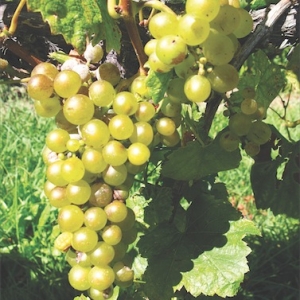Trevor Lupton, from Lewis Wright Valuation and Consultancy in Gisborne, says his first thought when he heard of bad cases of powdery, was growers weren’t getting good spray coverage.
“Because powdery mildew
is a great indicator of poor
spray coverage.”
But on further investigation, he realised that maybe there was something else going on. At the recent NZW Grape Days, Lupton explained how he had researched the spray diaries of a number of Gisborne growers to discover just what controls were being used and how often.
“I took two examples, one that had a good outcome and one that had a bad outcome. Both used the same spray unit, they had the same variety, same training system and were in a similar location. I wanted to break down the spray diaries to three parts. I wanted to know what went on from bud burst to pre flowering, but in particular I wanted to know what went on from flowering to bunch closure.”
Lupton said when he looked at the spray diary of the grower who had a bad outcome, he couldn’t understand the reason why. But as he started to look at more spray diaries a trend began to emerge.
“The blocks with good outcomes tended to use none or just one DMI in that crucial pre flowering to pre bunch closure period. Blocks that had a poor outcome, tended to use one or two DMIs in the same period.”
While Lupton was investigating in Gisborne a research trial was being undertaken in Hawke’s Bay. This Grochem trial began their spray programme after pre flowering. Treatments included an untreated control, three different DMIs and a further treatment using Quinoxyfen. The results showed dramatic differences in the level of powdery infection in the bunches at harvest.
“The untreated sat at 20 percent,” Lupton said. “The three different DMIs ranged from about five through to seven and up to 10 percent. The Quinoxyfen was sitting at 1.8 percent. Historically I would have expected the DMIs to have been at least as good
as the Quinoxyfen, but they weren’t.”
He believes that may be due to the way it has been used, or at least how often it has been used in a particular season.
“If you read the label it says you should only apply a maximum of two DMIs on their own, a maximum of four with two in the mix and not to use as an eradicant. But what has been the standard practice in this industry when we have powdery mildew outbreaks is we apply two DMIs back to back, seven to 10 days apart.
“So it’s not the DMIs themselves, it’s the way we have been using them.”
Within his Gisborne survey of growers, he discovered a small group who had a tough time with powdery in 2013, but this year had a good outcome. The common denominator among these three was they moved from using three to four DMIs during the season in 2013, to using only one or none at all this year.
Given Powdery mildew is considered a two-year disease, with the inoculum being carried over from one year to the next, the positive outcome of three growers, who limited their use of DMIs was significant, Lupton said.
His advice to growers for the future, is to limit the use of DMIs on their own to two per season, and no more than four when mixed with a multi fungicide. They should only be applied when disease levels are low, and not once an outbreak has occurred.
Ensure that the spray unit is targeting the areas of concern, double check with spray papers, and ensure you don’t leave too long an interval between sprays – no more than 14 days. Spray from alternate direction to ensure you fill in all gaps. And open the canopy up as much as is possible, given powdery mildew does not like UV light. ν
This email address is being protected from spambots. You need JavaScript enabled to view it.



